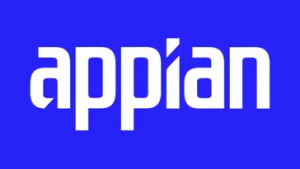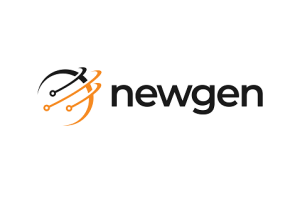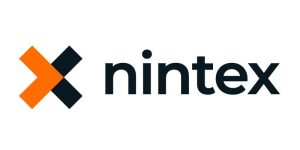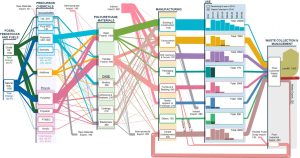Business Process Management (BPM) tools are software applications that empower organisations to visualise, analyse, and optimise their workflows. They provide a graphical representation of processes, allowing for better understanding, identification of inefficiencies, and implementation of improvements.
By leveraging BPM tools, organisations can achieve significant benefits including:
- Increased Efficiency: By identifying bottlenecks and areas of duplication, BPM tools can help streamline workflows and reduce waste.
- Enhanced Decision Making: Visualising processes allows for a clear understanding of how work flows, enabling data-driven decisions to be made.
- Improved Collaboration: BPM tools facilitate collaboration among stakeholders, fostering communication and alignment.
- Reduced Costs: Streamlined processes and improved decision-making lead to cost savings across the organisation.
- Enhanced Customer Satisfaction: Optimised processes directly impact customer interactions, leading to better customer experiences.
- Stronger Risk Management: By identifying potential risks and vulnerabilities within processes, organisations can take proactive measures to mitigate them.
Choosing the Right BPM Tool
When selecting a BPM tool, consider the following factors:
- Features: Identify the specific features that are important to your organisation, such as process modelling, automation, analytics, and integration capabilities.
- Scalability: Ensure the tool can handle the size and complexity of your processes, both now and in the future.
- Ease of Use: Look for a tool with a user-friendly interface that is easy for your team to learn and use.
- Cost: Consider the cost of the tool, including licensing fees, maintenance costs, and potential customisation expenses.
- Integration: Evaluate the tool’s ability to integrate with your existing systems, such as ERP, CRM, and HR software.
- Support: Assess the vendor’s reputation, support services, and commitment to ongoing product development.
- Deployment Options: Determine whether you prefer a cloud-based or on-premises deployment.
Top 12 BPM Tools
Pegasystems (Pega)

Known for its case management capabilities and low-code development environment.
Appian

Offers a variety of features, including process modelling, automation, and integration.
Bizagi

Provides a comprehensive set of features for process modelling, automation, and analytics.
Trisotech

Offers a range of BPM tools, including Trisotech BPMN Modeler and Trisotech BPM Suite.
AgilePoint

Focuses on flexibility, scalability, and ease of use.
Oracle

Offers a variety of BPM tools, including Oracle BPM Suite and Oracle Process Cloud Service.
IGrafx

www.igrafx.com Provides tools for process modelling, analysis, and optimisation.
Kissflow

Kissflow Project A cloud-based BPM platform with a focus on simplicity and ease of use.
Progress Software

Offers a variety of BPM tools, including Progress Corticon and Progress SonicMQ.
Newgen

Offers a comprehensive set of features for process modelling, automation, and analytics.
Nintex K2

A workflow automation platform with tools for process modelling and automation.
Microsoft

Offers a comprehensive suite of BPM tools, including Power Automate, Azure Logic Apps, and SharePoint workflows.
Detailed Comparison of BPM Tools
| Feature | Microsoft | Pega system | Appian | Bizagi | Trisotech | Agile point | Oracle | IGrafx | Kissflow | Progress Software | Newgen | Nintex K2 |
| Process modelling | Comprehensive, supports BPMN 2.0 | Strong focus on case management | Visual bas ed modelling, low-code approach | Robust process modelling capabilities | Offers a variety of modelling techniques | Flexible and adaptable modelling | Comprehensive suite of BPM tools | Strong process modelling capabilities | User-friendly interface and intuitive modelling | Focus on automation and integration | Comprehensive BPM platform | Workflow automation platform |
| Automation | Robust automation features | Strong automation capabilities, including robotic process automation (RPA) | Low-code automation capabilities | Extensive automation features | Supports automation through integration | Strong automation capabilities | Robust automation features | Automation capabilities | Intuitive automation features | Strong automation capabilities | Comprehensive automation features | Strong automation capabilities |
| Analytics | Advanced analytics capabilities | Strong analytics features | Built in analytics tools | Comprehensive analytics capabilities | Offers various analytics tools | Strong automation capabilities | Robust analytics features | Analytics capabilities | Basic analytics features | Analytics capabilities | Comprehensive analytics features | Analytics capabilities |
| Integration | Seamless integration with Microsoft products | Strong integration capabilities | Integrates with various system | Comprehensive analytics features | Offers integration with various system | Strong automation capabilities | Comprehensive integration capabilities | Integration capabilities | Integration capabilities | Strong integration capabilities | Comprehensive integration features | Integration |
| Cloud Deployment | Yes | Yes | Yes | Yes | Yes | Yes | Yes | Yes | Yes | Yes | Yes | Yes |
| On-Premises Deployment | Yes | Yes | Yes | Yes | Yes | Yes | Yes | Yes | Yes | Yes | Yes | Yes |
| Pricing | Enterprise | Enterprise | Enterprise | Enterprise | Enterprise | Enterprise | Enterprise | Enterprise | Enterprise | Enterprise | Enterprise | Enterprise |
| Ease of use | User-friendly interface | Intuitive and easy to use | Visually appealing and intuitive | User-friendly interface | Relatively easy to use | User-friendly interface | Comprehensive feature but can be complex | Intuitive interface | Easy to use and learn | User-friendly interface | User-friendly interface | Intuitive and easy to use |
| Scalability | Highly scalable | Can handle large-scale processes | Scalable to handle complex processes | Scalable to handle various process types | Scalable to meet organisational needs | Scalable to handle complex processes | Scalable to handle various process types | Scalable to meet organisational needs | Scalable to handle various process types | Scalable to meet organisational needs | Scalable to meet organisational needs | |
| Industry focus | General purpose BPM platform | Strong in financial services and insurances | General purpose BPM platform | Strong in healthcare and manufacturing | General purpose BPM platform | General purpose BPM platform | General purpose BPM platform | General purpose BPM platform | General purpose BPM platform | General purpose BPM platform | General purpose BPM platform | Workflow automation |
Note: This table provides a general overview of the features and capabilities of each BPM tool. The specific features and pricing may vary depending on the version and edition of the tool.
When selecting a BPM tool, it is important to evaluate your specific needs and requirements carefully. Consider factors such as the size and complexity of your processes, your team’s technical expertise, and your budget. By carefully comparing the available options, you can select the BPM tool that best meets your organisation’s needs.
Key Considerations for Selection
- Features: Identify the specific features that are important to your organisation, such as process modelling, automation, analytics, and integration capabilities.
- Scalability: Ensure the tool can handle the size and complexity of your processes, both now and in the future.
- Ease of Use: Look for a tool with a user-friendly interface that is easy for your team to learn and use.
- Cost: Consider the cost of the tool, including licensing fees, maintenance costs, and potential customisation expenses.
- Integration: Evaluate the tool’s ability to integrate with your existing systems, such as ERP, CRM, and HR software.
- Support: Assess the vendor’s reputation, support services, and commitment to ongoing product development.
- Deployment Options: Determine whether you prefer a cloud-based or on-premises deployment.
BPM Automation Tools
BPM automation tools focus on reducing manual effort by automating repetitive and rule-based processes. These tools often include features such as robotic process automation (RPA), AI-driven decision-making, and workflow triggers that enable tasks to be executed automatically once certain conditions are met. By implementing automation, organisations can achieve greater efficiency, minimise human error, and free up employees to focus on higher-value activities.
BPM Workflow Tools
BPM workflow tools are designed to streamline how tasks move between individuals, teams, and systems. They provide a clear framework for assigning responsibilities, setting deadlines, and monitoring progress. With workflow visualisation, managers can easily identify bottlenecks, while employees gain greater transparency into their roles within a process. Ultimately, workflow tools foster collaboration, accountability, and consistency across departments.
Additional Factors to Consider
- Mobile Accessibility: If your team needs to access process models from mobile devices, ensure the tool offers mobile compatibility.
- AI and Machine Learning Integration: Some tools incorporate AI and machine learning capabilities to automate tasks, predict outcomes, and optimise processes.
- BPMN 2.0 Compliance: Ensure the tool supports the latest BPMN 2.0 standard to ensure compatibility and future-proofing.
- Industry-Specific Templates: Some tools offer industry-specific templates that can accelerate process modelling and ensure compliance with industry standards.
- Security and Data Privacy: If your organisation handles sensitive data, ensure the tool has robust security measures in place to protect your information.
Business Process Integration Tools
Business process integration tools enable different systems and applications within an organisation to work together seamlessly. These tools ensure that data flows smoothly between platforms such as ERP, CRM, and HR systems, eliminating silos and manual data transfers. Integration not only enhances operational efficiency but also provides decision-makers with a unified view of organisational performance, leading to more accurate and timely insights.
Industry-Specific BPM Services
Many industries require BPM solutions tailored to their unique needs, regulations, and workflows. Industry-specific BPM services offer prebuilt templates, compliance features, and specialised integrations that accelerate implementation and reduce risk. For example, healthcare BPM solutions often focus on patient care pathways and compliance with medical standards, while financial BPM services emphasise regulatory reporting and fraud detection. By adopting tailored BPM services, organisations can achieve faster ROI and ensure alignment with industry best practices.
Case Studies of Successful BPM Implementations
To gain insights into how BPM tools can be used to drive business success, consider the following case studies:
* Company A: A large financial institution implemented a BPM platform to streamline its loan approval process, reducing turnaround times and improving customer satisfaction.
* Company B: A healthcare provider used a BPM tool to optimise its patient discharge process, reducing hospital stays and improving patient outcomes.
* Company C: A manufacturing company implemented a BPM platform to improve its supply chain management, reducing costs and improving delivery times.
By examining these case studies, you can learn how other organisations have successfully leveraged BPM tools to achieve their goals.
Conclusion
Business Process Management (BPM) tools are essential for organisations seeking to improve their efficiency, reduce costs, and enhance customer satisfaction. By carefully selecting the right BPM tool and implementing it effectively, organisations can gain a competitive advantage and drive business success.
* https://www.acode.edu.au/mod/resource/view.php





